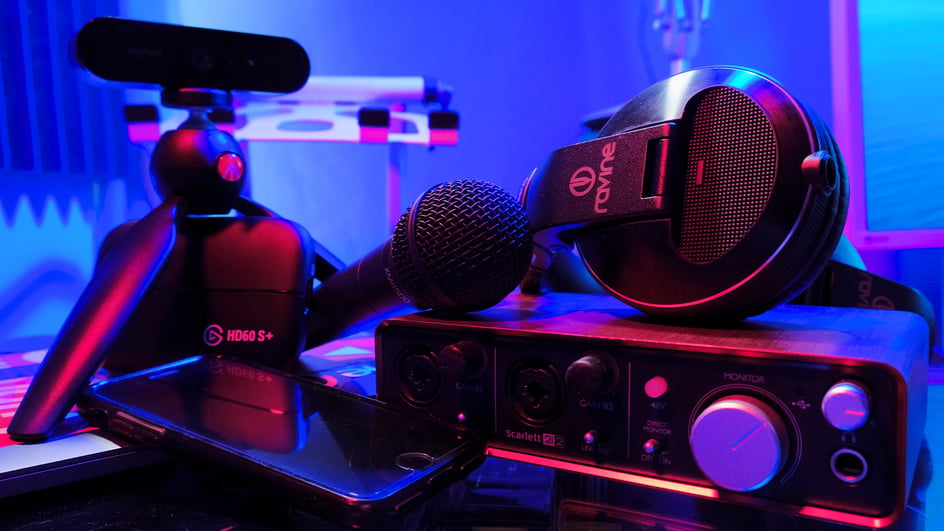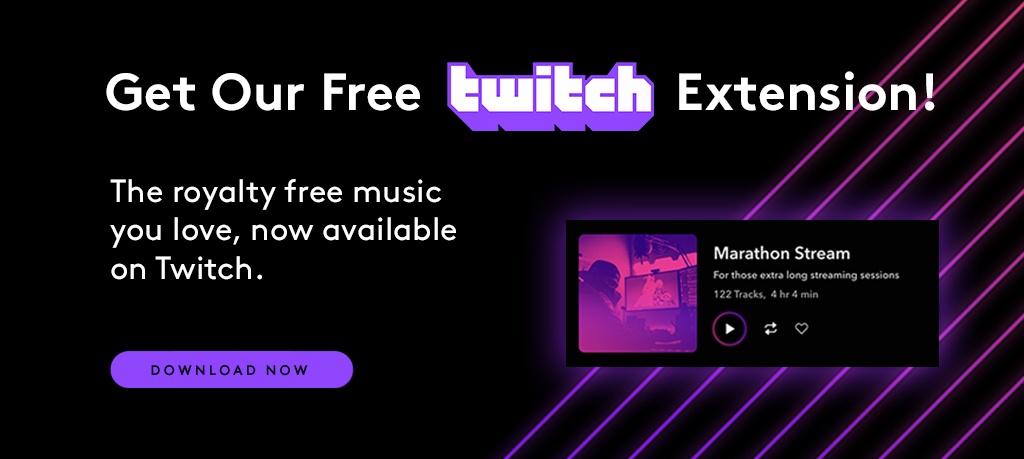
Aug 11, 2021
People don’t come to Twitch just to watch video games. The main attraction is the personalities of streamers, and also the communities they build around their channels.
In other words, your Twitch channel can’t survive on good content. The presentation of that content is what matters, and a major part of a viewer’s experience is sound design.
A study from the Audio Engineering Society showed that low-quality audio will make a viewer think the video quality is even lower. (It’s a weird, subconscious thing that researchers are still investigating. The brain can be kind of finicky when it comes to audiovisual content.)
The TL;DR version of that study is that sound matters. From notification sounds to audio levels to the quality of the mic you use, your Twitch audio setup can make or break your entire stream. And that means it’s absolutely worth thinking about before you go live on your next stream.
The power of presentation on Twitch
Viewers rarely start a stream at the beginning. In fact, the only ones who do are your most loyal subscribers, the ones who hang out in the chat pre-stream and wait for you to go live. And while streamers love that group, you can’t expect every viewer to be a superfan.
Twitch is a super competitive platform, so people will drop in and out of your streams constantly. Part of that ties to our terrible attention span as humans (Forbes tells us it’s less than 7 seconds), but you can also tie that to the DNA of Twitch — people bounce between streams searching for something entertaining, whether it’s a new release or an old favorite.
This is where your performance/presentation comes into play. Unlike podcasts or prerecorded videos, livestreams are always moving. So you can’t rely on a smooth intro and a few good one-liners to captivate your audience — you’ve got to make sure you are ready to go from the moment you go live until you sign off for the day.
Audio plays a fundamental role in that presentation.
Why audio quality matters for streamers
When you first started wondering how to become a Twitch streamer, chances are you spent a lot of time on the platform as a viewer. You’d found some great personalities, cool communities, and probably a new game or two.
But the most successful streamers don’t think of Twitch as a place to chat while they play games. They treat it like a serious entertainment platform with a great Affiliate Program, and that means they’re investing in high-quality gear to produce high-quality content.
You may not be able to replicate the Twitch audio setup of Ninja, shroud, or Pokimane. The good news is that while some people might expect that from every streamer, it’s hardly necessary. (And in a lot of cases, “good enough” sound quality really is good enough.)
One thing you can do to kind of get around the pricing issue is find gear that helps your livestreams have a similar level of perceived quality. Sometimes, “fake it ‘til you make it” is a perfectly viable plan.
(If you’re interested in the more technical side of this stuff, Twitch has a few tips about things like capture cards and audio delays.)
How much does a good Twitch audio setup cost?
A great place to start with that is audio quality. Great audio goes a long way in drawing attention away from the lack of a $700 gaming chair or color-changing LEDs to backlight that giant Funko POP! display case you’ve got.
The good news is that a lot of good mics are on the cheaper side too. Look up any list of “best microphones for Twitch” and you’ll notice a few names that show up on every list:
And the best part? These mics range in price from $60 to $250. It’s not exactly pocket change, but that’s a pretty reasonable price for a high-quality, expert-approved streaming mic.
(You’ll also want to invest in things like a pop filter and a mic arm, or even a bundle of different gear pieces. These are pretty cheap but can seriously help clean up the audio quality.)
The importance of your audio brand
Okay, I admit that “sonic branding” is a kind of high-level, theoretical concept. But there is more to someone’s audio experience than the quality of your mic — just like there is more to the visual experience of Twitch than the latest game you’re streaming.
If you’re building a channel from scratch, or trying to add some professionalism to the look and feel of your channel, you can’t just buy a new mic and call it quits. You’re going to want to think about things like Twitch background music, notification sounds, and audio mixing.
The goal is simple: You want to create a good environment for viewers. Whether people are joining pre-stream to hang out in the chat, or jumping on to watch a non-gaming stream, or even listening to your stream while they do something else, how you use audio carries weight.
I mean, wouldn’t you want someone to hear a notification and think, “Oh, that’s [your name here]”? That’s the sort of power that the top streamers enjoy, and audio plays a part in that.
Getting music and sound effects isn’t exactly a walk in the park, however. Twitch music rules are somehow both simple and also confusing — simple because Twitch spells it all out, but confusing because music licensing is super complex and Twitch hasn’t always enforced its own rules.
The point is that you’re a content creator, not a musician or a copyright lawyer. You just need to know what music you can and can't play on Twitch, so you can stream music without worrying about impending DMCA claims.
That’s where a service like Soundstripe can come in to pick up and carry all that extra baggage for you.
By signing up for a single subscription, you can get unlimited royalty free music or sound effects (or both) that you can use on Twitch and any other platforms where you share content.
If finding copyright-safe music for streaming has ever been an issue, check out our Twitch Pro plan for over 20 curated playlists (i.e., 200+ hours of label-quality music).
You’ll be fully protected from copyright infringement claims, which means you can start using great sound effects and music without having to ever worry about DMCA takedowns or Twitch music rules. So it’s your chance to build a clear brand and get the most out of your Twitch audio setup.
Further reading
We've covered a lot of other helpful tools and resources so far. But if you're interested in learning about additional tips and tricks for content creators, here are some of the most popular articles from across the Soundstripe blog:
